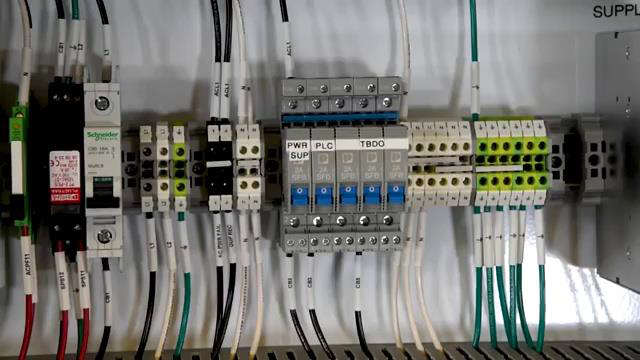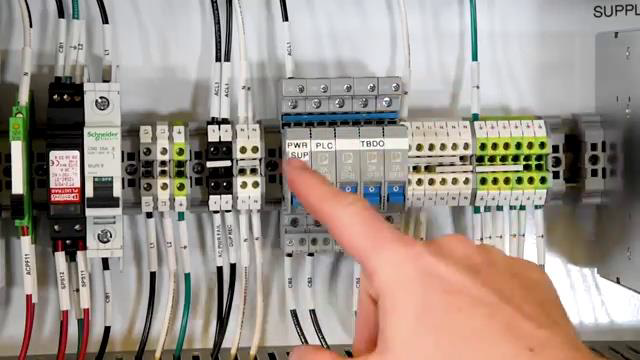Wiring_Jumpers_Part_1_What_They_Are__Why_We_Use_Them.pdf
What are "Jumpers" and why are they used in so many industrial applications?
What is a "Jumper"?
- Commonly refereed to as a "Jumper", "Jumper Bar", or "Terminal Block Jumper"
- It is a short length or conductor (commonly copper) that is used to connect two or more points in an electrical circuit
- Very commonly used in industrial control panels
- Are mainly intended for use with specific hardware, such as terminal blocks
Why Do We Use Jumpers?
- Are not required in most cases, but save a lot of time
- Eliminate the need to run small lengths of wire between two points (such as terminal blocks)
- Commonly used in motors, circuit boards, and many of electrical applications
- Used to monitor things like: run status of a motor, alarm status, etc.
Transcript:
[0m:4s] Hi I'm Josh Bloom, welcome to another video in the RSP Supply education series. In today's video we're going to be talking about something that is commonly used in industrial wiring referred to as a jumper.
[0m:17s] Also, sometimes referred to as a jumper bar or terminal block jumper, a jumper is typically a short length of conductor, commonly copper, that is used to connect two or more points within an electrical circuit.
[0m:32s] While that description can sound a bit complicated, trust me is very simple.
[0m:37s] Jumpers are used all the time, especially in control panels and in industrial wiring situations.
[0m:44s] Today we will discuss in more detail why we use jumpers, how we use them, and a few of the different types of jumpers that exist and are commonly used.
[0m:55s] First, what is a jumper, and why do we use them? As mentioned before, a jumper is a conductor that is used to connect two or more points in an electrical circuit.
[1m:6s] Jumpers are specifically designed for this purpose but are not required in many cases.
[1m:13s] If jumpers were unavailable, you could simply use a wire to make the same kind of connection in most cases.
[1m:21s] When wiring terminal blocks, for instance, it is common to connect multiple terminal blocks together to make it easier to distribute power through the panel. This can be done with a jumper or with a wire. For example, in this control panel here you see, we have a bank of circuit breakers. We have one wire feeding power to the circuit breakers. So, how are they connected together?

[1m:47s] We have a jumper bar that connects these different circuit breakers together. It allows us to send power to multiple different devices through multiple circuit breakers through this one jumper bar. Now, we do have the ability to jumper the circuit breakers with wire, it just becomes more difficult and time consuming. This is one of the main reasons we use jumper bars. Keep in mind that when using jumpers with terminal blocks, you will most likely have to use the jumper that is designed to be used with that specific kind of terminal block.

[2m:24s] In many cases, the manufacturer will make their own jumpers that will only work with their own terminal blocks. So, jumpers are not always interchangeable.
[2m:36s] By using jumpers, we eliminate the need to physically wire several points together, which can take a lot of time and, in some cases, be very difficult.
[2m:46s] The jumper saves us time and will most likely do a better job than if you did it yourself.
[2m:51s] Jumpers can be used in many different scenarios ranging from power distribution within a panel, like we have already discussed today, they can also be used in motors and other electrical equipment like circuit boards, as well as many other situations. Again, remember, jumpers are mostly used to replace the need for bulky wires to connect multiple points but are not in many cases, always necessary. However, they do make the job much easier.
[3m:19s] Next, we will actually show you some different types of jumpers and how to actually use them with the terminal blocks they are intended for, but we'll save that for our next video.
[3m:30s] For a full line of jumpers and thousands of other products, please go to our website. For more information or other educational videos, go to RSPSupply.com, the Internet's top source for industrial hardware. Also, don't forget: like and subscribe.




